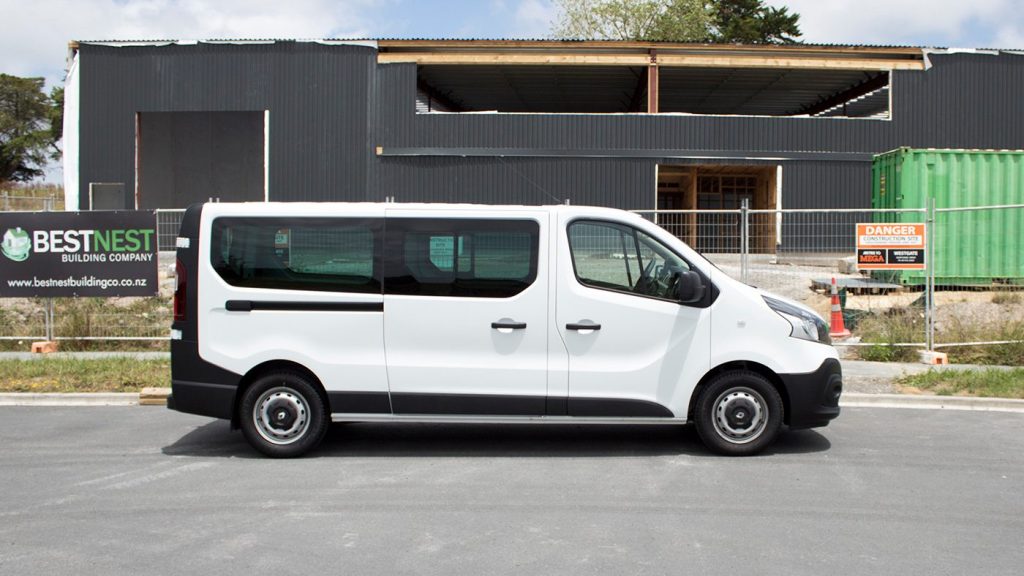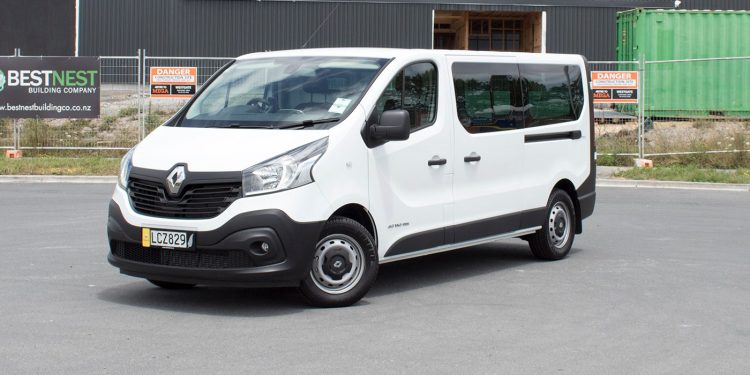2018 Renault Trafic dci 140 LWB review
Words Robert Barry | Photos RB
Renault New Zealand’s commercial arm is focussed on further growth in 2018, and we’ve spent a week in the long wheelbase Trafic van fitted with the optional glazing package to see what’s on offer.
Renault has been Europe’s top-selling light commercial brand for more than 18 years, a fact which isn’t lost on the local Kiwi-owned distribution company, which is determined to gather more market share from the direct competitors being the Ford Transit Custom, Volkswagen Transporter, Mercedes-Benz Vito, and to a lesser degree the Toyota Hiace.
The manufacturer has been building it’s mid-size Trafic van since the first generation launched in 1980, followed by the second generation in 2001, but the New Zealand distributor didn’t introduce the third generation vehicle (Trafic III) to our market until June 2016 nearly two years after it’s European debut.
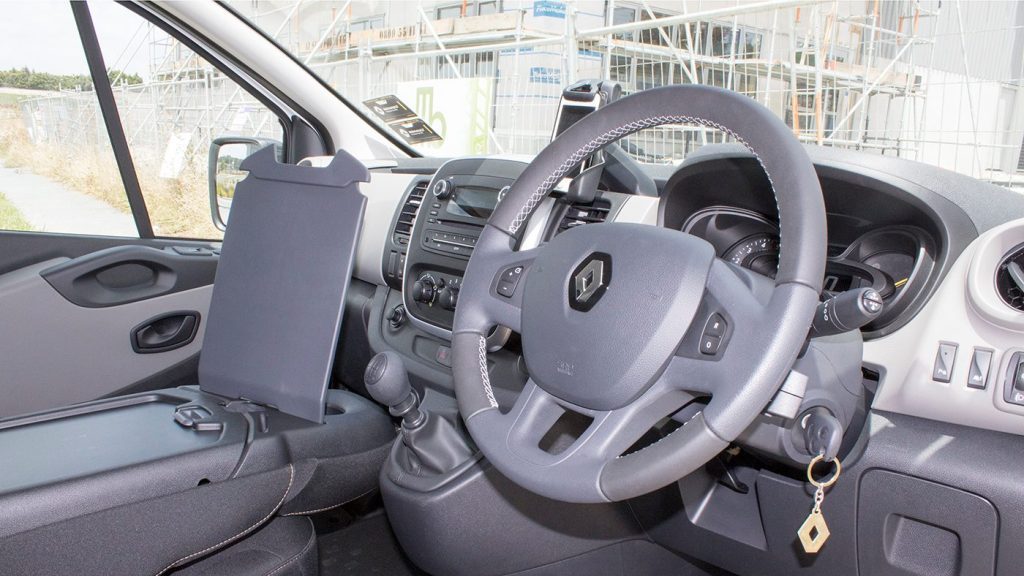
Renault has specified the Trafic for our market with a high level of safety features and stand equipments to appeal to tradespeople and other “user choosers” who are buying the vehicle as their personal workhorse – these are purchasers who are looking for the longevity, comfort and safety of a European brand rather than a basic mobile tool box with wheels.THE JEWEL IN THE TRAFIC’S CROWN HAS TO BE THE TWIN-TURBOCHARGED 1.6-LITRE COMMON RAIL DIESEL ENGINE
This series of light commercial vehicles is also marketed in Europe by Opel and Vauxhall as the Vivaro, Nissan as the NV300 and Fiat as the Talento. But given Opel and Vauxhall are now owned by Renault’s French rival Groupe PSA, this relationship is likely to cease in the future.
In New Zealand there are only two derivatives of the Trafic III available, the long wheelbase panel van (with optional glazing) or the long wheelbase six-seat crew bus.
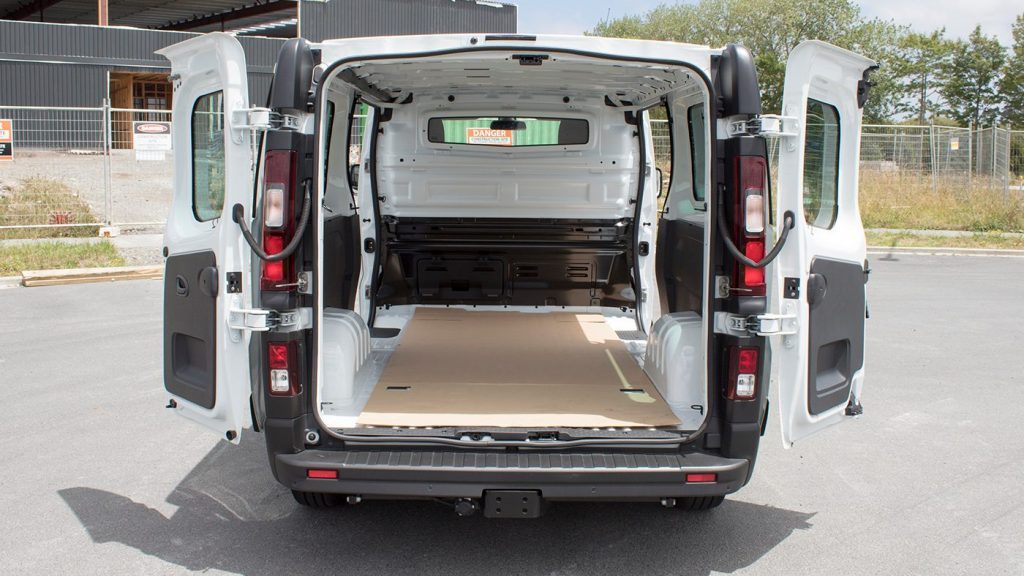
Our test vehicle arrived with the $2000 optional glazing package as well as the $500 tow bar preparation. The Trafic III comes standard with dual sliding doors – and the glazing package sees the addition of click-opening windows to these.
The glazed steel bulkhead is also a standard fit, and comes with a hatch beneath the passenger seat for longer items such as pipes or ladders to be carried.
The Trafic III offers car-like comfort and convenience in the cabin, and Renault reckons there’s about 14 different storage areas with 90 litres of space for the flotsam and jetsam that most tradies/couriers carry around with them during the working day.
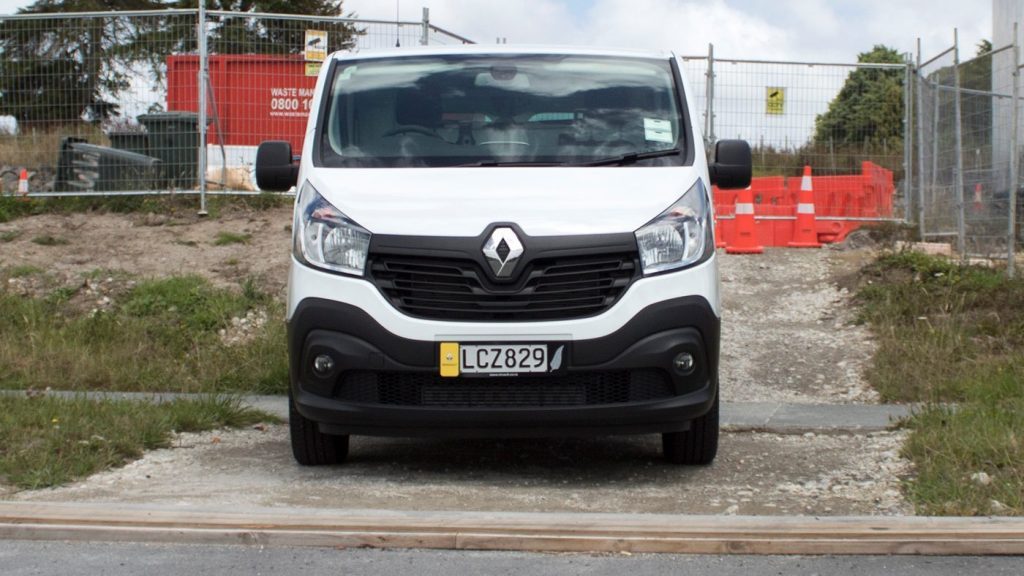
The back of the middle passenger seat folds down to reveal an integrated document and laptop holder as well as a switchable clipboard which can be angled towards the driver or passenger.
Twin cup holders in the dashboard, are supplemented with bottle holders in the door pockets, and there are also overhead shelves for storing maps, docket books and the like.
There is manual air-conditioning rather than climate, but thanks to the bulkhead its very easy to keep the cabin cool or warm as the occupants desire.
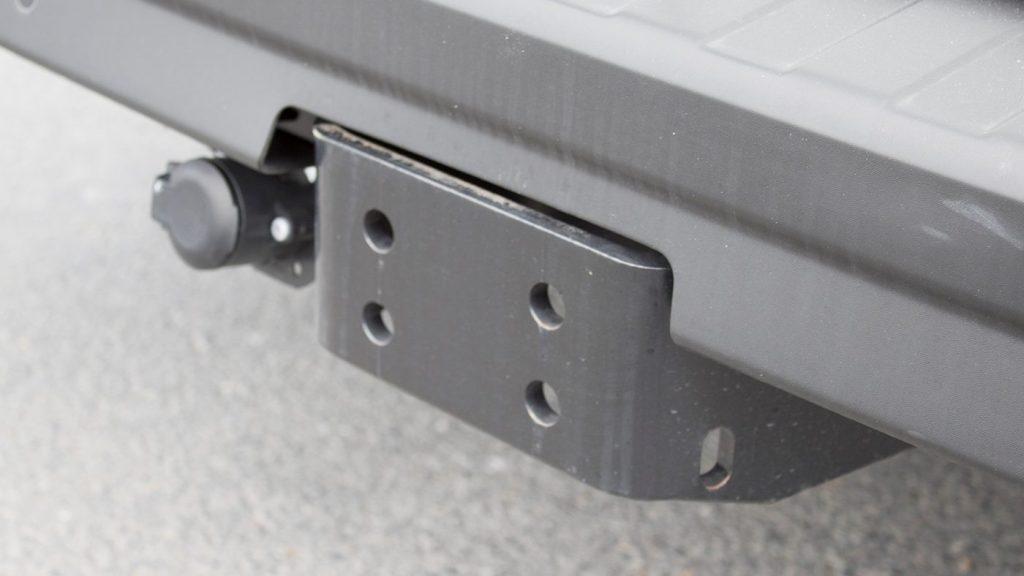
Other standard features on the Trafic include speed limiter, cruise control, parking sensors and a reversing camera system which has the screen pop up in the rear view mirror, which is a nice touch, and is easily viewed.
In the back of the Trafic the cargo bay is nearly three metres in length and 1.7 metres in width which means it will easily accommodate two Kiwi sized pallets or a standard sheet of plaster board.
There are 16 floor anchoring rings provided in the rear of the Trafic so that any load can be easily secured to prevent movement and potential damage to the cargo or the vehicle.
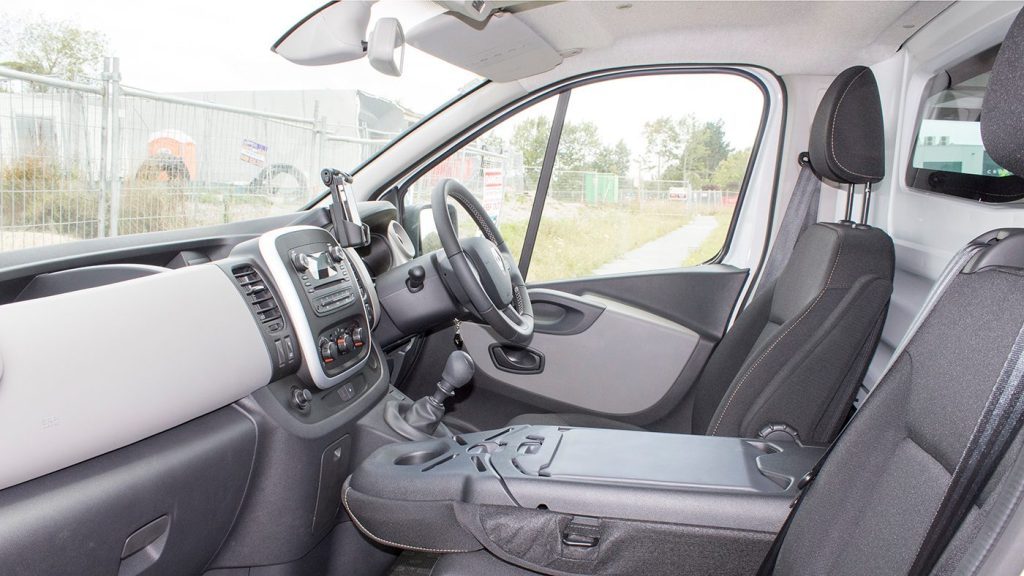
Incidentally – Renault says the steel bulkhead in the Trafic has passed the fridge test by providing protection from flying objects weighing 50kg travelling at 50 km/h.
For added safety, load adaptive control (LAC) adjusts the electronic stability control (ESC) depending on whether the vehicle is empty or fully loaded.
Although one wasn’t fitted to our vehicle as it was delivered brand spanking new, Renault do provide a hard wearing protective rubber mat for the floor in the cargo bay at a not unreasonable price of $350.
The jewel in the Trafic’s crown has to be the twin-turbocharged 1.6-litre common rail diesel engine which outputs 103 kilowatts of engine power and 340 Newton metres of torque.
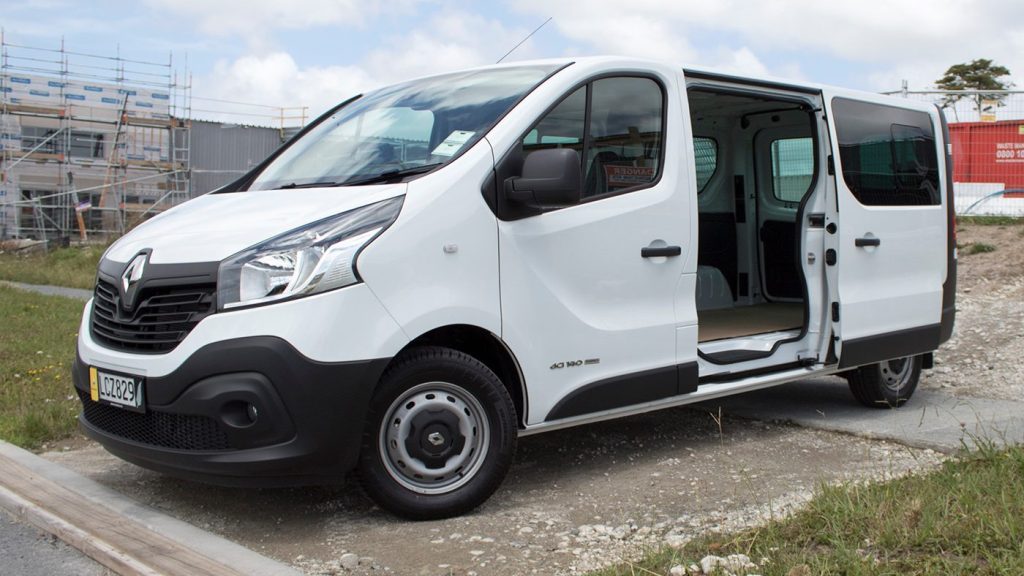
Renault quotes combined fuel consumption of 6.2L/100km and this is easily achieved.
Don’t let it’s smaller capacity fool you – this is a gem of a diesel engine, the torque just has to be experienced to be believed, even when in top gear on the motorway, there is no need to change down as there is more than enough power on tap.
Allied to a pleasantly slick shifting six-speed manual transmission, the Trafic is a surprisingly nimble creature around the city despite its size , and it’s very easy to get a jump on other traffic away from standstill.
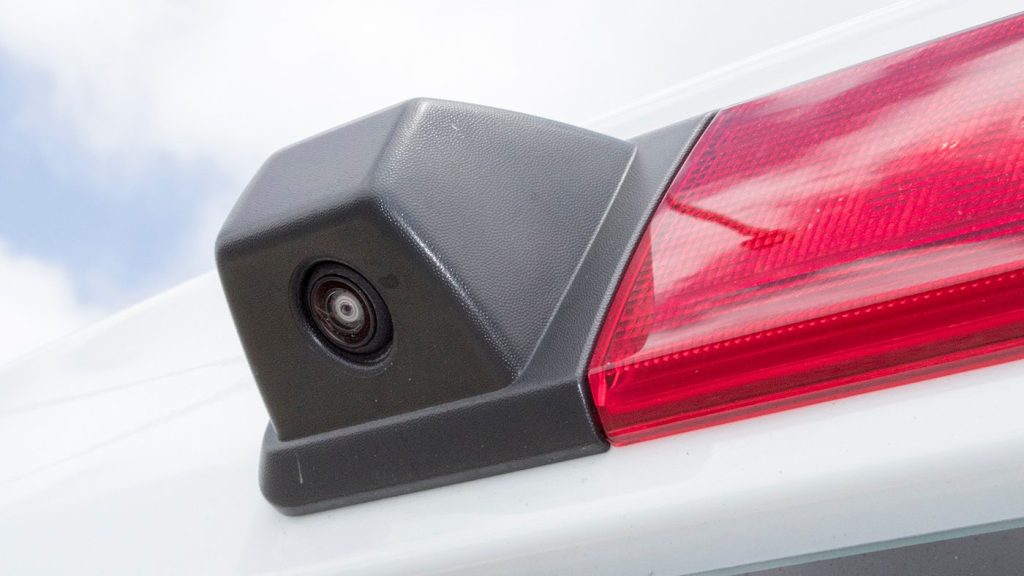
It’s also incredibly quiet – no doubt due to the quality of the sound deadening in the cabin as well as the bulkhead, and also due to the fact that the windscreen is set on a greater angle than many other vans for improved harmonics and a more peaceful drive.
The electric power steering feels responsive and well weighted at all speed and thanks to the MacPherson-type front suspension and hydraulic rear dampers, the Trafic provides excellent handling and a comfortable ride with a load on and without.
Overall the Trafic more than meets the brief of providing a well equipped, safe and comfortable working companion, and there is no doubt more of them will hitting the road in 2018.
| Model | Renault Trafic dci 140 LWB Van | Price | $49,990 |
| Engine | 1598cc, 4-Cylinder, 103kW/340Nm | Drivetrain | 6-speed manual |
| Fuel Use | 6.2L/100km | C02 Output | 0g/km |
| 0-100km/h | 0.00 sec | Weight | 1736kg kerb weight |
| Service | 30,000km intervals, 3 year / 100,000km warranty | Load | 6.0m3 volume, 2937m length, 1387m height |
| Vitals | 3010kg GVM, 1274kg payload | Vitals | 2000kg towing capacity |
